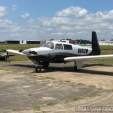How do you Take Advantage of Speed Brakes on Approaches?
-
Members Online
- TCC
- Fly Boomer
- TaildraggerPilot
- Matt M
- Greg Ellis
- cody
- amillet
- MB65E
- Born2Fly
- Wingfree
- BillyT0020
- Beaker
- jhertig
- haymak3r
- Hector
- 65MooneyPilot
- donkaye, MCFI
- TangoTango
- Ragsf15e
- outermarker
- Kelpro999
- Ibra
- PT20J
- eman1200
- mooniac58
- Adam_StPete
- midlifeflyer
- TheAv8r
- Guillaume
- N201MKTurbo
- BaldEagle
- Minisky
- testwest
- IvanP
- hammdo
- LOCOLJ
- dzeleski
- Scott Ashton
- GMBrown


Recommended Posts
Join the conversation
You can post now and register later. If you have an account, sign in now to post with your account.